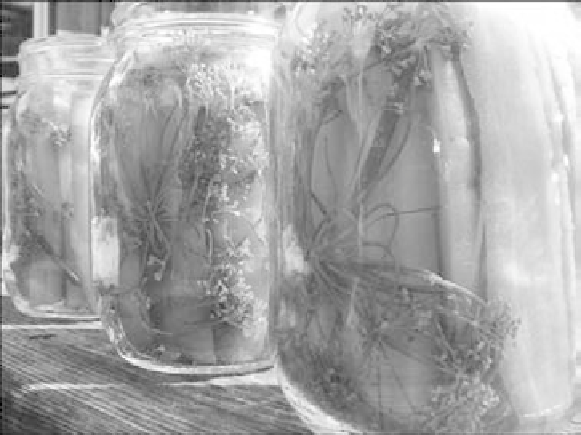Agriculture Reference
In-Depth Information
8. Within 10 to 20 minutes the jars should be sealed. The lids will pop downward in the
middle, signifying a good seal has been achieved. Let the jars fully cool before putting them
away in the pantry after testing the seal to make sure it's secure. It's a good rule of thumb to
leave them sitting overnight to ensure a good seal.
If any of the jars fail to seal, refrigerate them and use the contents within a week. Be sure you mark
or label the jars so you know what you've canned. Trust me, it's not always easy to tell and you'll
want a way to include the date so you know when the produce was canned.
Basic Steps for Pressure Canning
Pressure canning is the method used when the food being prepared is not acidic enough to kill the
botulism. It allows the temperature to be raised high enough to kill potential mold and bacteria as
well. Pressure canning techniques are very similar to the water-bath canning techniques so you'll
notice a similarity in the steps. Before starting, check your equipment, jars, and pressure canner
seals as described earlier in the section “Home Canning Safety Tips” and in your user manual.
For more information and specific instructions on canning and other methods of food preservation,
a good resource is
The Home Preserving Bible (A Living Free Guide)
by Carole Cancler.
Canned carrots with dill are made in the pressure canner because carrots are a low-acid food.
(Photo courtesy of Broadfork Farm)














